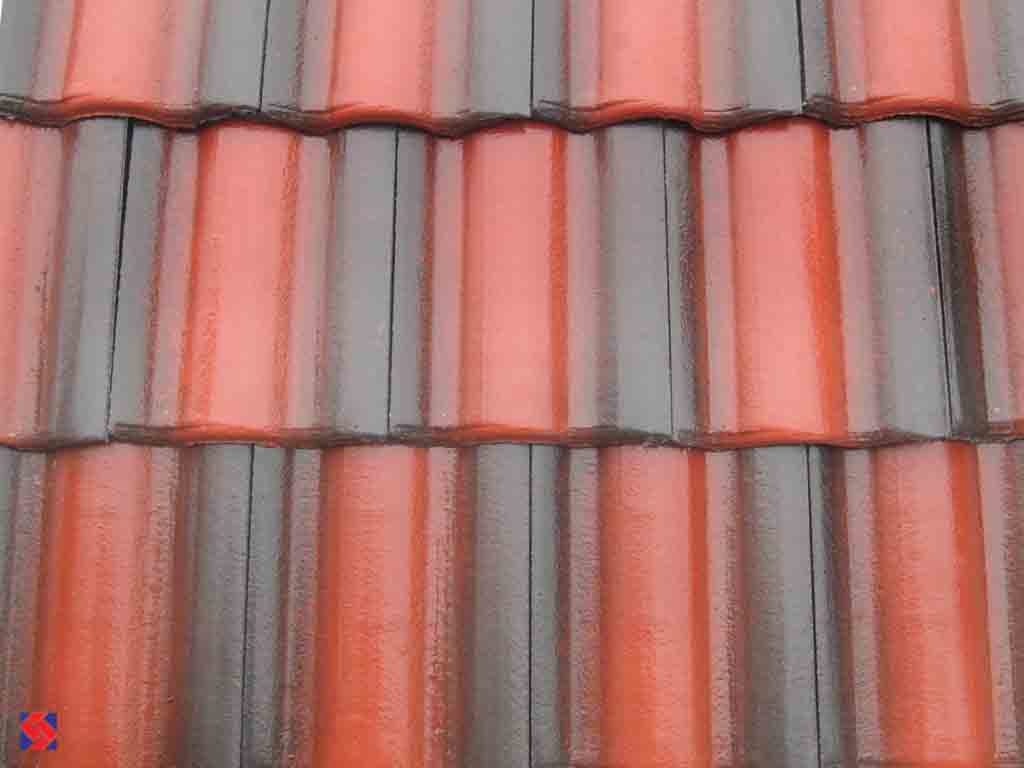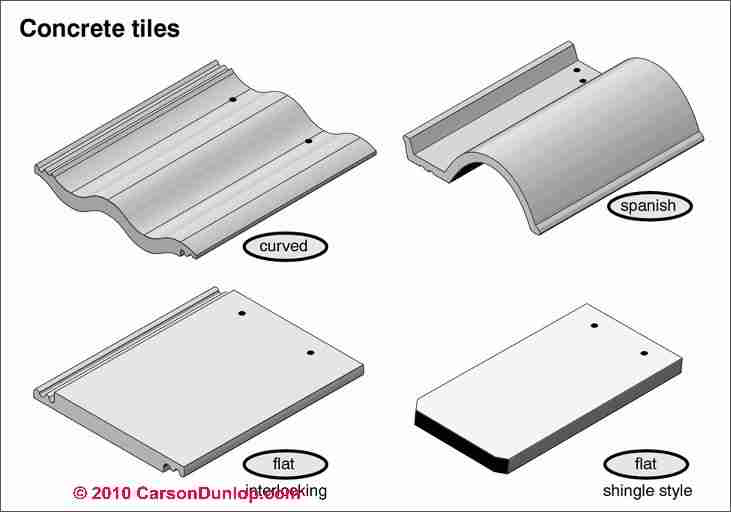

Extrusion methods were adapted to clay and soon there was a parade of new manufacturers making a tile roof much more affordable for the average homeowner. This signaled the rise of concrete tile as a major player in the American market. In 1961 the first high pressure, extruded, interlocking concrete roof tile machine was operational in Freemont, Cal. The system, with its overlapping pieces and large amounts of mortar, was expensive and considered high end. These classic pan and cap, concrete and clay barrel tile roofs had one draw-back. This brings us back to the reason Historic Cuban Tile Roofs last so long – they were also installed using the pan and cap method and, being of such high quality, absorb almost no water.

As years went by people started painting them and, in effect, waterproofed their roof. Unfortunately, concrete absorbs water so, when it rains for prolonged periods, the tile becomes saturated and “leaks” from underneath. Many of those old barrel tile roofs are still in service today because they were mortared together, piece by piece, allowing very little water to penetrate to the underlayment. Both were available in many colors including a popular Spanish Red but white became the dominant choice and was considered more contemporary, fitting the Art Deco style. The signature look of clay tile in Miami was born.ĭuring the forties and fifties two types of concrete tile roofs became very popular – 9″ flat and pan & cap barrel. Knowing this, Merrick went to Spain and salvaged the ruins of estates and monasteries there. Merrick went to Cuba to buy as much as he could and discovered they were hundreds of years old, having originally come from Spain as ship ballast. All of these men utilized salvaged Cuban clay tile. Also in 1920 developer George Merrick began his creation of an “old world” city – Coral Gables.

His brother Charles then built The Stone House in 1920 on the Deering Estate at Cutler. Tile Roofs of Miami ViscayaĬlay tile roofs in Miami began at Viscaya, John Deering’s winter home built on Biscayne Bay in 1916. However, they didn’t become popular until decades later as production methods improved. Production by hand prevailed on a small scale well into the 1900s and became available in the U.S. The invention of concrete roof tiles is attributed to Adolph Kroher in mid-nineteenth century Bavaria. Evidence of them has been found in the settlements of Jamestown, Virginia and St. can be traced to European immigrants, primarily the Dutch of the Northeast in the mid-1650s and Spanish missionaries of California in the early 1700s. Tile roofing originated in China over 10,000 years ago and appeared in the Middle East soon after. Tile roofs are extremely durable, giving homeowners piece of mind knowing it will not rot, has a Class A fire rating and stands up to the area’s salty air and blazing sun. When choosing tile South Florida serves as the perfect sampler where every style imaginable is represented. Residents may find their most useful resource is all around them. Concrete Roof Tile vs.Ask ten roofers about tile roofs in Miami, “Who makes the best tile?” You may get ten different answers as they will consider many criteria including strength, price, aesthetics, warranties and technical considerations such as water absorption rates.Get Inspired! Add beauty and distinction to your home! Lightweight Roof Tile Inspiration If you are unsure if EagleLite is right for you, we highly recommend that you contact a licensed contractor who will be happy to assist you. Many of these colors and blends are Energy Star® and Cool Roof rated products that are environmentally friendly and can help reduce energy costs and urban heat islands.

Plus, they are backed by the best warranty in the industry.ĮagleLite is available in a vast array of colors from: terracottas to warm earth tones to refreshing greens. Our EagleLite products are beautiful, enduring and sustainable, making them a sound investment. Just because they are lighter doesn’t mean that they are any less durable than our conventional concrete roof tiles. profiles are a fraction of the weight of our conventional roof tiles and are perfect for re-roof projects. Our Sub-Six profiles and our Flat Lightweight 720 lbs. Other Roofing MaterialsĮagleLite® is our lightweight, fire safe roof tile that is available* in some of our most established profiles and colors.


 0 kommentar(er)
0 kommentar(er)
